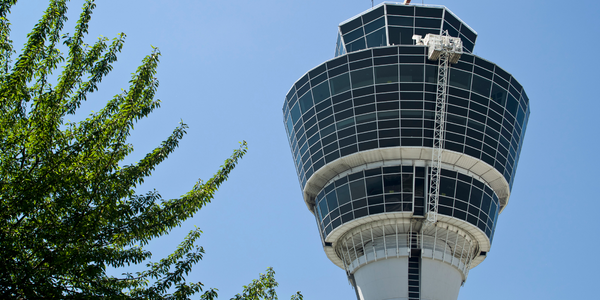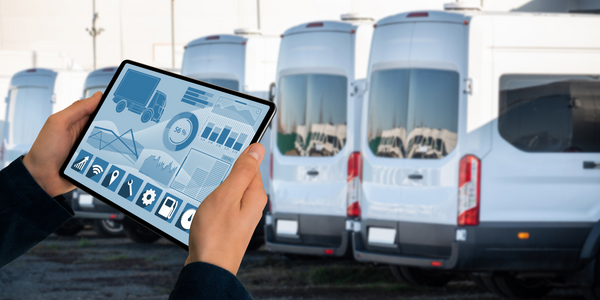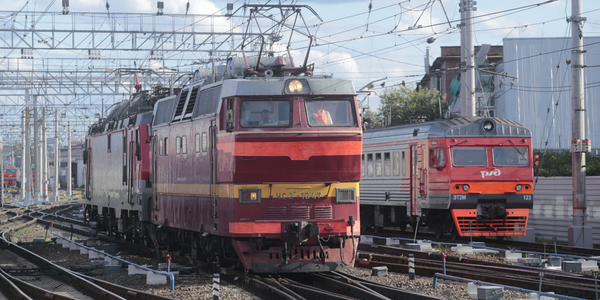Control Center automation enables measurable cost savings and efficiency gains for Logitrac
Customer Company Size
Mid-size Company
Region
- America
Country
- United States
Product
- Cisco Jasper
- Control Center
Tech Stack
- Real-time Data Processing
- API Integration
- SIM Management
Implementation Scale
- Enterprise-wide Deployment
Impact Metrics
- Cost Savings
- Productivity Improvements
- Customer Satisfaction
Technology Category
- Platform as a Service (PaaS) - Connectivity Platforms
- Analytics & Modeling - Real Time Analytics
- Application Infrastructure & Middleware - API Integration & Management
Applicable Industries
- Transportation
- Construction & Infrastructure
- Consumer Goods
Use Cases
- Fleet Management
- Asset Health Management (AHM)
- Predictive Maintenance
- Remote Asset Management
Services
- System Integration
- Software Design & Engineering Services
About The Customer
Logitrac is a global provider of GPS-based tracking and asset management solutions, serving a wide range of industries including transportation, fleet management, construction, and the consumer market. The company leverages advanced technology to offer real-time visibility and automated controls, enhancing efficiency and reducing costs for its customers. With a diverse customer base and operations in 18 countries, Logitrac is committed to delivering accurate and timely information for equipment management, maintenance alerts, and monitoring unauthorized vehicle use.
The Challenge
Logitrac faced significant challenges in managing a broad customer base across various industries, requiring efficient and secure communication from devices to data centers. The company needed a solution to optimize SIM connectivity, manage device configurations, and provide real-time data to customers. Additionally, Logitrac struggled with visibility and control when working with partners not using the Cisco Jasper platform, leading to inefficiencies and increased costs.
The Solution
Logitrac implemented the Cisco Jasper platform to enhance device management efficiency through automation. The platform allows for real-time management of SIM connectivity, device status adjustments, and rate plan modifications. By automating tasks such as configuring customer devices and setting usage alerts, Logitrac significantly reduced labor costs and improved operational efficiency. The platform's API capabilities and intuitive user interface facilitated seamless integration into Logitrac's daily workflow, enabling the company to monitor high device usage and control costs effectively. Additionally, the platform's real-time data and overage alerts provided resellers with better insights into customer needs, allowing for proactive problem-solving and cost-saving adjustments.
Operational Impact
Quantitative Benefit

Case Study missing?
Start adding your own!
Register with your work email and create a new case study profile for your business.
Related Case Studies.
.png)
Case Study
Improving Vending Machine Profitability with the Internet of Things (IoT)
The vending industry is undergoing a sea change, taking advantage of new technologies to go beyond just delivering snacks to creating a new retail location. Intelligent vending machines can be found in many public locations as well as company facilities, selling different types of goods and services, including even computer accessories, gold bars, tickets, and office supplies. With increasing sophistication, they may also provide time- and location-based data pertaining to sales, inventory, and customer preferences. But at the end of the day, vending machine operators know greater profitability is driven by higher sales and lower operating costs.

Case Study
IoT System for Tunnel Construction
The Zenitaka Corporation ('Zenitaka') has two major business areas: its architectural business focuses on structures such as government buildings, office buildings, and commercial facilities, while its civil engineering business is targeted at structures such as tunnels, bridges and dams. Within these areas, there presented two issues that have always persisted in regard to the construction of mountain tunnels. These issues are 'improving safety" and "reducing energy consumption". Mountain tunnels construction requires a massive amount of electricity. This is because there are many kinds of electrical equipment being used day and night, including construction machinery, construction lighting, and ventilating fan. Despite this, the amount of power consumption is generally not tightly managed. In many cases, the exact amount of power consumption is only ascertained when the bill from the power company becomes available. Sometimes, corporations install demand-monitoring equipment to help curb the maximum power demanded. However, even in these cases, the devices only allow the total volume of power consumption to be ascertained, or they may issue warnings to prevent the contracted volume of power from being exceeded. In order to tackle the issue of reducing power consumption, it was first necessary to obtain an accurate breakdown of how much power was being used in each particular area. In other words, we needed to be able to visualize the amount of power being consumed. Safety, was also not being managed very rigorously. Even now, tunnel construction sites often use a 'name label' system for managing entry into the work site. Specifically, red labels with white reverse sides that bear the workers' names on both sides are displayed at the tunnel work site entrance. The workers themselves then flip the name label to the appropriate side when entering or exiting from the work site to indicate whether or not they are working inside the tunnel at any given time. If a worker forgets to flip his or her name label when entering or exiting from the tunnel, management cannot be performed effectively. In order to tackle the challenges mentioned above, Zenitaka decided to build a system that could improve the safety of tunnel construction as well as reduce the amount of power consumed. In other words, this new system would facilitate a clear picture of which workers were working in each location at the mountain tunnel construction site, as well as which processes were being carried out at those respective locations at any given time. The system would maintain the safety of all workers while also carefully controlling the electrical equipment to reduce unnecessary power consumption. Having decided on the concept, our next concern was whether there existed any kind of robust hardware that would not break down at the construction work site, that could move freely in response to changes in the working environment, and that could accurately detect workers and vehicles using radio frequency identification (RFID). Given that this system would involve many components that were new to Zenitaka, we decided to enlist the cooperation of E.I.Sol Co., Ltd. ('E.I.Sol') as our joint development partner, as they had provided us with a highly practical proposal.

Case Study
Airport SCADA Systems Improve Service Levels
Modern airports are one of the busiest environments on Earth and rely on process automation equipment to ensure service operators achieve their KPIs. Increasingly airport SCADA systems are being used to control all aspects of the operation and associated facilities. This is because unplanned system downtime can cost dearly, both in terms of reduced revenues and the associated loss of customer satisfaction due to inevitable travel inconvenience and disruption.

Case Study
IoT-based Fleet Intelligence Innovation
Speed to market is precious for DRVR, a rapidly growing start-up company. With a business model dependent on reliable mobile data, managers were spending their lives trying to negotiate data roaming deals with mobile network operators in different countries. And, even then, service quality was a constant concern.

Case Study
Digitize Railway with Deutsche Bahn
To reduce maintenance costs and delay-causing failures for Deutsche Bahn. They need manual measurements by a position measurement system based on custom-made MEMS sensor clusters, which allow autonomous and continuous monitoring with wireless data transmission and long battery. They were looking for data pre-processing solution in the sensor and machine learning algorithms in the cloud so as to detect critical wear.







